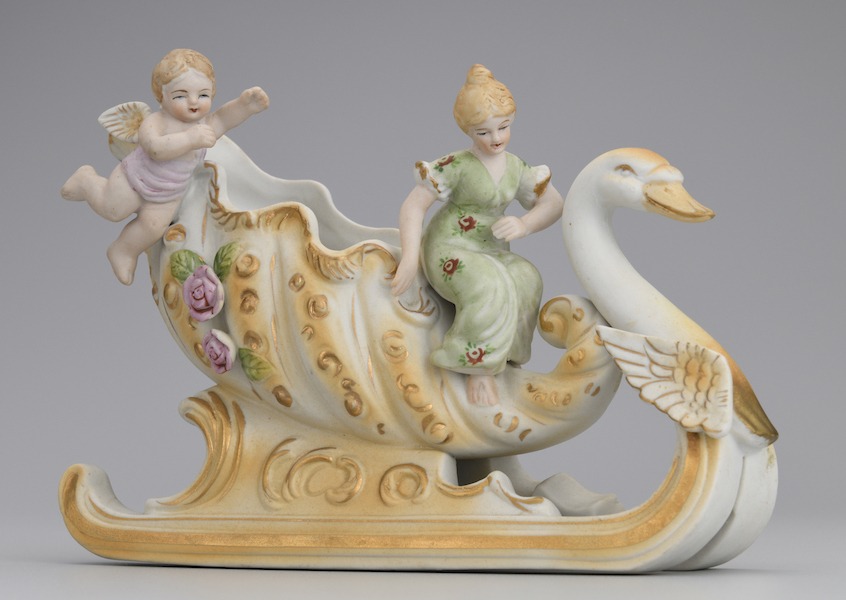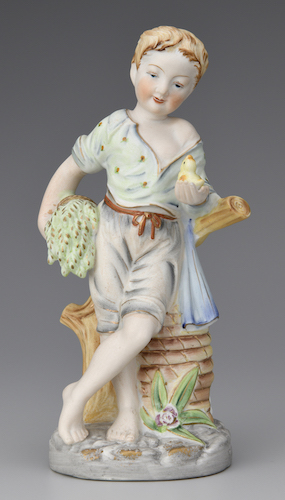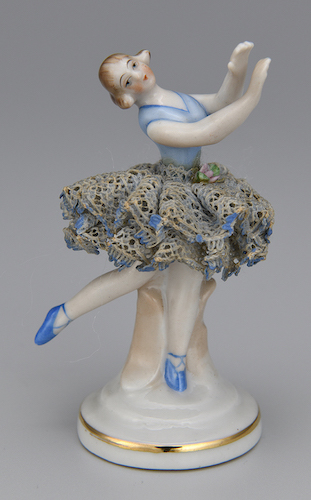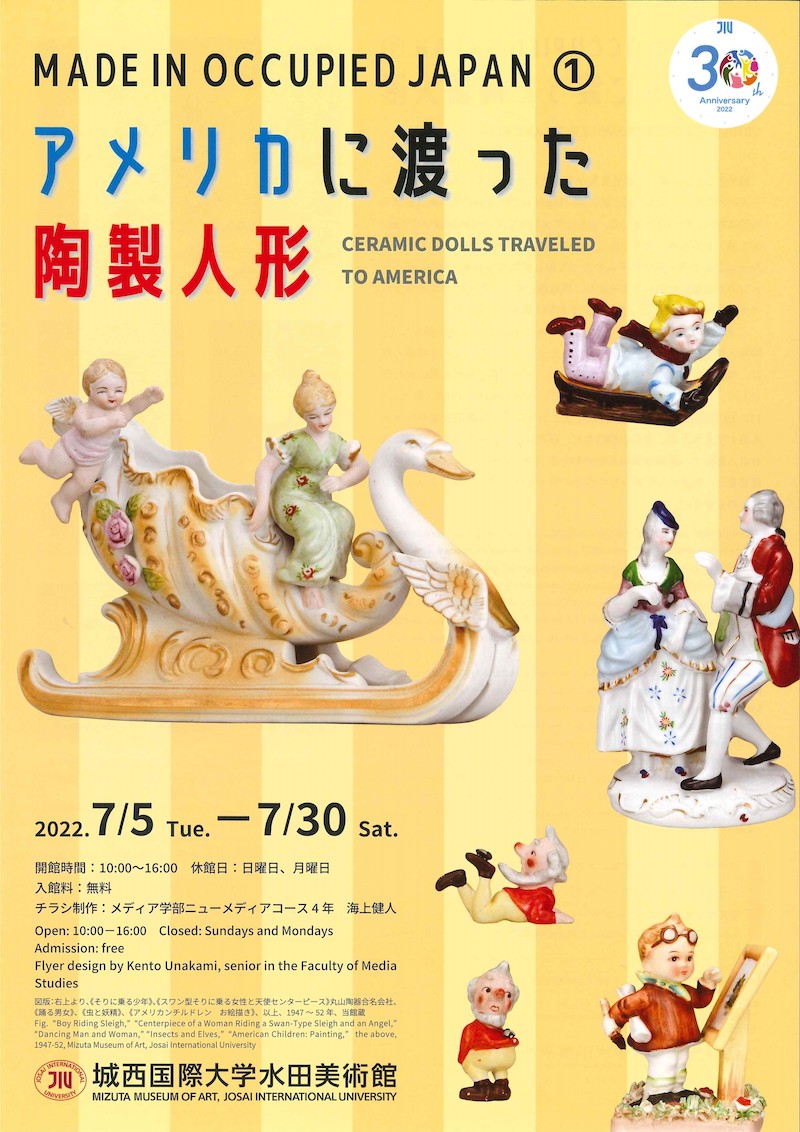During the postwar Allied Occupation, Japanese exports were labeled "Made in Occupied Japan" from 1947, when civilian trade resumed, until 1952. In that period, a variety of products were exported, primarily to the United States, including ceramics, lacquerware, metalwork, toys and cameras, which in recent years have become popular collectors' items. In 2019, a collection of approximately 900 Occupied Japan (OJ) items, mostly ceramics, was donated to Josai International University by a private collector who acquired the items from the United States.
As the first in a series of exhibitions displaying the OJ collection, this exhibition features ceramic figurines. From the prewar period, ceramic dolls, known as figurines or novelties, were produced in and exported from Seto and other regions, and enjoyed popularity in the United States as an alternative to German-made porcelain dolls. When exports resumed after the war, a huge number of dolls traveled across the sea, ranging from elaborate bisque dolls to inexpensive, rustic dolls, including Meissen-style men and women in 17th- and 18th-century European costumes, Hummel-style children, angels, and fairies. Enjoy the OJ collection, which supported the reconstruction of postwar trade and has returned to Japan for the first time in approximately 70 years.

Centerpiece of a Woman Riding a Swan-Type Sleigh
and an Angel

Chick and Boy

Ballerina in Blue Shoes
the above, 1947-52, Mizuta Museum of Art, Josai International University




